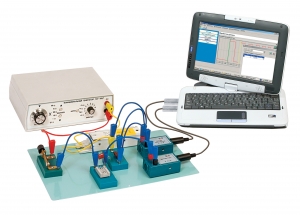
Set of equipment for the study of physics is based on a modular system of physical experiment "Nauchnye razvlechenya" and is fully consistent with the new educational standards. The system is based on the use of digital sensors of physical values which allow the student to obtain more accurate experimental data is much faster to process them, draw conclusions and provide summary information in the form of various charts, graphs, tables.
The included traditional training equipment will allow student to perceive physics as the science of real-life events. In the experiment, a student will be able to develop the skill of the selection of the basic features of the physical phenomena on the background of many small secondary factors, to establish causal relationships, quantitative regularities.
Thus, a modular system makes it possible to conduct experiments of real physical experiments to obtain precise results which allow students to develop research skills, ability to design a situation of project management applications.
There could be carried out 4 experiments on the mechanics of translation motion and 3 works on thermal phenomena and gas laws, 4 works on electrodynamics and 4 works of the geometric and wave optics.